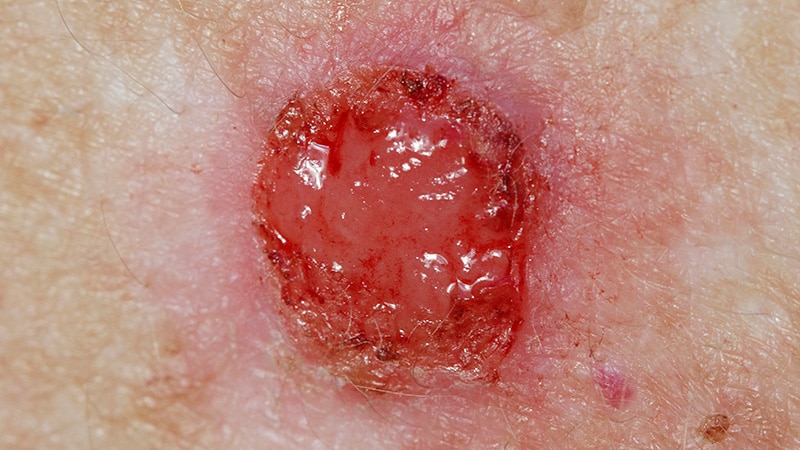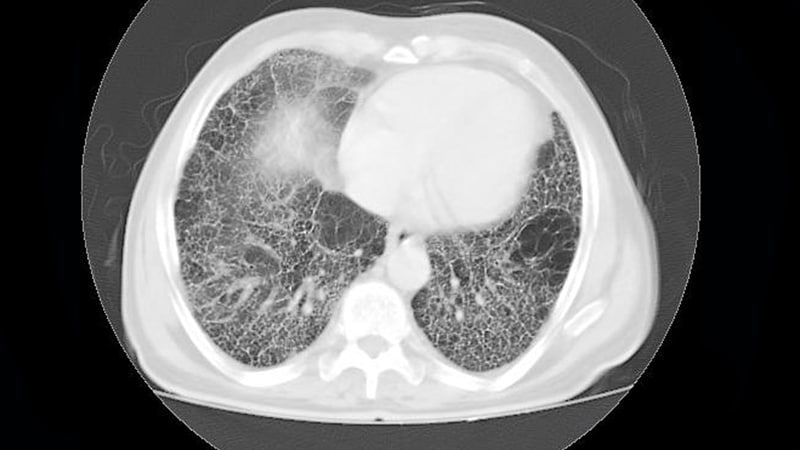Before the identification of the gene PI3K as the cause of a group of disorders with overlapping clinical features, PIK3CA-related overgrowth spectrum (PROS) was described in terms of its many different clinical findings, including CLOVES, (congenital lipomatosis overgrowth vascular skeletal and spinal anomalies) and CLAPO (capillary malformation of the lower lip and lymphatic abnormalities of the face and neck). Kim M. Keppler-Noreuil, MD, a pediatrician and clinical geneticist at the University of Wisconsin Division of Genetics and Metabolism, talked to Medscape about PROS diagnosis and treatment.
PROS is an umbrella term referring to various conditions. What clinical features should prompt a clinician to consider this diagnosis?
PROS is heterogeneous in terms of its clinical findings. It can involve multiple systems or it can include one area or tissue. The main clinical findings may include congenital or early childhood–onset overgrowth and vascular malformations. The different terms used to describe these disorders — CLOVES and CLAPO — hint at its main features; there tends to be involvement or overgrowth of different tissues, including skeletal, fibrofatty, vascular, or brain. Also, there can be vascular abnormalities, such as lymphatic, venous, and capillary malformations.[1] In some patients, we observe only isolated features, including epidermal nevus, isolated macrodactyly, hemimegalencephaly, and seborrheic keratoses.
In 2015, a group of researchers, including our group at the NIH, developed diagnostic criteria to help clinicians make a clinical diagnosis and to provide guidance about whether to do genetic testing.[2] These conditions are typically sporadic, not inherited, and genetic testing generally requires a biopsy. The clinical features (two or more) of overgrowth (adipose, muscle, nerve, skeletal), vascular malformations (capillary, venous, arteriovenous, lymphatic), or epidermal nevus, or isolated features — large isolated lymphatic malformation; isolated macrodactyly or overgrown splayed feet/hands, limbs; truncal adipose overgrowth or hemimegalencephaly (bilateral/dysplastic megalencephaly/focal cortical dysplasia) — should prompt consideration of genetic testing, but clinicians should also consider the presence of functional abnormalities, including urinary incontinence, constipation, gastrointestinal bleeding, seizures, autism, and intellectual disability.
Is PROS considered a rare condition?
Prevalence figures are not yet determined because of the wide spectrum of disorders and malformations caused by PI3K gene variants. As we learn more about it and recognize the clinical phenotypes, I think we will learn that it isn't as rare as we previously thought. If we consider that an individual with PROS can present with only one of these isolated findings — segmental overgrowth or isolated venous and lymphatic malformations — each of these isolated malformations occur in about 1 in 1000-2000 individuals. CLOVES, a component phenotype of PROS, is estimated to occur in 1 in 10,000-20,000 individuals.
The management of such diverse conditions can be very challenging. Can you give us an overview of PROS treatment?
Our patients tend to require the care of a multidisciplinary team that is composed of specialists in different areas — geneticists, dermatologists, interventional radiologists, plastic surgeons, general surgeons, ENT, hematologists, and oncologists — because of the broad medical issues that individuals with PROS can have. The treatment of the different presentations is recommended based on loss of function, such as difficulty walking; complications, including bleeding, ulceration, and infection[3]; or cosmetic abnormalities. Therefore, interventions may include debulking surgery, anticoagulation therapy, sclerotherapy, or removal of extra digits.[4]
A recent development is a therapy that directly affects the disease pathways — PI3Kα, AKT, mTOR — suppressing the activity of the gene associated with cellular growth and proliferation. Sirolimus is used to treat vascular malformations associated with PROS. Alpelisib is a PI3K inhibitor recommended for individuals who have complications or progressive overgrowth.
What supports the interest in cancer therapies for PROS patients?
The PIK3CA gene pathway is associated with many different cancers, including breast, colon, brain, and skin cancers. We know that some drugs developed to treat those cancers could be repurposed for the treatment of PROS. Alpelisib can be used in patients with hormone receptor (HR)–positive, human epidermal growth factor receptor 2 (HER2)–negative breast cancer and PIK3CA gene variant.[5] The PIK3CA gene variant is a gain-of-function variant, which causes hyperactivation of the PI3K gene. Identification of the specific gene variant causing this condition (and cancers) has led to personalized targeted gene therapies that are potentially more effective, as they address the problem area with more accuracy.
Do you have more information about some of the upcoming treatments or those you're working on?
I was involved in clinical trials with a multicenter international group looking at efficacy and side effects of sirolimus[6] as well as miransertib, and recently alpelisib. Sirolimus (an mTOR inhibitor) and alpelisib (a direct PI3K inhibitor) are presently used as drug treatment alternatives for complications associated with PROS. Currently, we consider use of alpelisib for children older than 2 years severely affected by progressive overgrowth — for example, with impaired function or compression of other organs, or with progressive or complicated vascular malformations. The availability of new therapies underscores the importance of early identification of affected patients to prevent complications.

.webp) 3 weeks ago
5
3 weeks ago
5


























 English (US)
English (US)